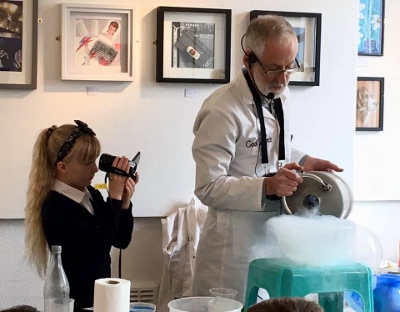 |
 |
| 1. The photo above shows me pouring liquid nitrogen from a Dewar into a bowl for balloon dunking demos. The Dewar cost over £400 but keeps the liquid cold for over two weeks! The mist is the usual fog you get from condensed water vapour in the winter. The class Science Ambassador is using my camcorder which is feeding the projector so everyone can see the action on screen. She was brilliant! |
2. Here we see a volunteer measuring the temperature of the liquid nitrogen in a simple thermos flask. The temperature probe was purchased from Pico Technology in June 2006 for around £600. The probe was designed for indutrial use, not for schools, but has proved invaluable recording temperatures from the -196 degC of liquid nitrogen to the 600 degC of a candle flame! |
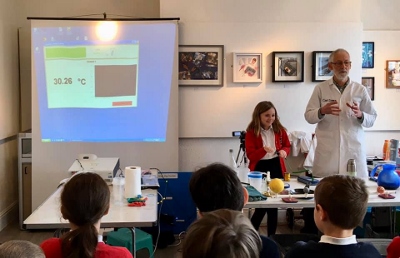 |
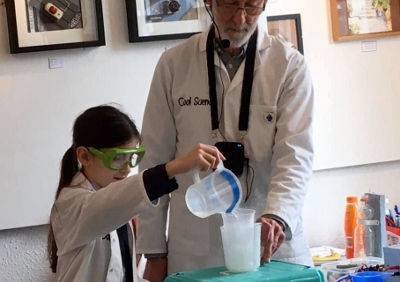 |
| 3. The first thing I do with the temperature probe is to get a volunteer to measure the temperaure of her hand. Pupils see temperature rise to over 30degC. The reading is displayed on the projector screen using an old laptop (2005) and a software programm very kindly written for me for free by an employee at Pico Technology (St Neot's). Unfortunately it only works on Windows XP! |
4. Pouring water into a beaker of liquid nitrogen. Note the safety glasses. We talk about how long it takes to make an ice cube in a deep freeze (say 1 hour) and then make one in about 1 minute! The ice cube formed is put in a frying pan for all to see. When it starts to melt, it is safe to touch. |
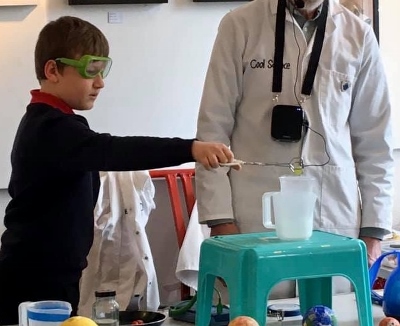 |
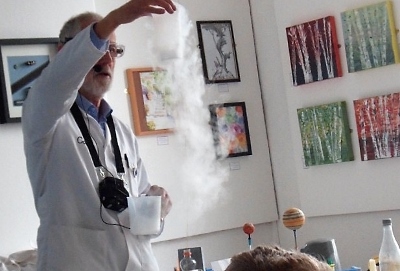 |
| 5. Our helper drops a grape into the liquid nitrogen. The tongs are used because some liquid splashes up. As the grape juice freezes, the liquid nitrogen is seen to boil furiously because the grape is over 200 degC hotter than the liquid. As the juice freezes, it expands which splits the grape. Once put in the frying pan, the grape will frost up, |
6. Here the cup containing the water plus liquid nitrogen is producing a lot of cold air which is shown by the mist. I particularly like how the cold misty air sinks after leaving the cup because cold air is denser than normal air. |
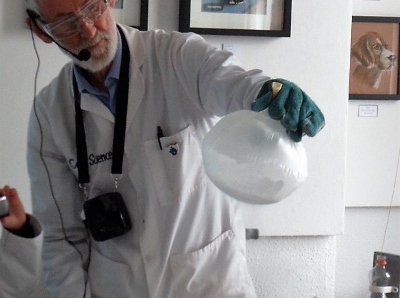 |
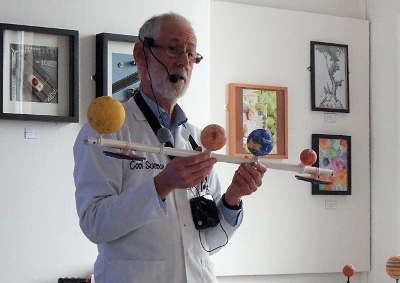 |
| 7. If a balloon is lowered into liquid nitrogen it will be seen to shrink (not blow up as some children predict). The oxygen and nitrogen in the air are condensing as they lose energy. Inside the balloon you can see a small amount of liquid air (liquid oxygen and liquid nitrogen). As the balloon warms up again, the liquid evaporates and the balloon goes back to normal. |
8. This 'planet bar' has proved invaluable in my work. It shows the sun and the 4 inner planets. Each planet can be slid either way along the bar so you can talk about earth's 'goldilocks' position in the solar system. I have a second bar with the outer planets but not on the same scale! |
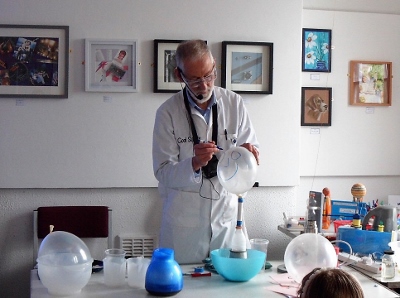 |
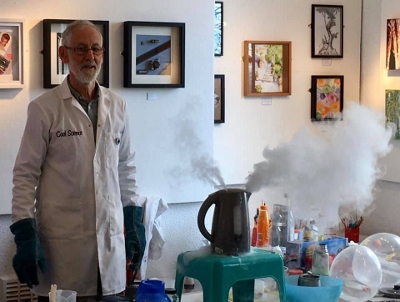 |
| 9. A bit of fun at the end is to fix a large balloon on to a bottle containing some liquid nitrogen. As the liquid evaporates it can produce about 1000 times as much gas. Here I am drawing a face on the balloon which soon explodes with a loud bang helped on by pouring some warm water over the bottle. |
10. I discovered this fun demonstration by mistake one day when 'clearing up'. It was after a lecture to Y9 pupils at Northampton University in 2007. First bring the kettle to the boil and then pour some liquid nitrogen into it taking care not to lean over it. The mist escaping is actually mildly warm! |
| |
|



















